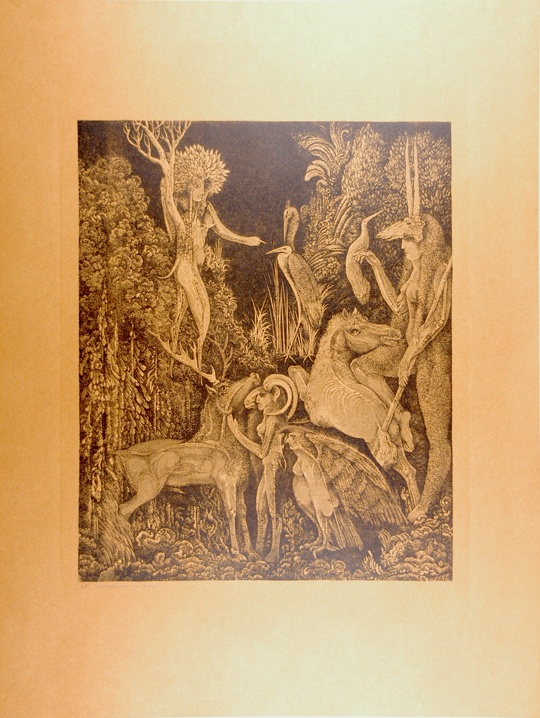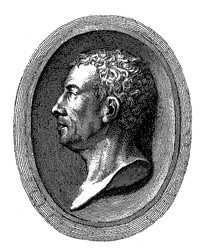Im Vordergrund des Bildes ist eine weibliche Gestalt mit Widderhörnern nach links gewandt dargestellt. Sie streichelt den Hals eines Hirsches. Rechts neben ihr steht eine Harpye. Über der Harpye ist ein weißes Pferd abgebildet, welches den Kopf auf den Oberschenkel einer ganz rechts im Bild stehenden weiblichen Gestalt abgelegt hat. Diese Gestalt ist bis auf ein Fell, welches über ihre Schultern gelegt ist, unbekleidet. Ein Tierschädel mit langen, geraden Hörnern ziert ihren Kopf. Sie hält in der Rechten einen Vogel, in der Linken einen Stab. Oben links im Bild ist Diana als Dryade in den Bäumen stehend dargestellt. Im Hintergrund befindet sich üppige Vegetation und einige Vögel.
Ohne Jahresangabe
Signatur und Bezeichnung vorhanden, Inhalt unbekannt.
en

